Introduction
Ethernet cable vs phone cable is a common doubt, and being aware of their differences and uses is not negotiable if you plan to wire a setup.
So often, you’ve stared at a mess of cords and asked which one of them was connecting you to Internet or to the phone line. The simple answer is that it depends on which cable you’re using. Is that an Ethernet cable or a phone cable? Unless you are highly experienced, you’ll just see a jungle of cables that look almost the same.
Ethernet cables and telephone cables are two essential types of wiring. They are used for data transmission and communication, and each of them has different purposes. Ethernet cables are used for high-speed networking while telephone cables, which were originally created for voice communication, are used to cover basic connectivity in legacy systems and applications that work with low-bandwidth.
Today, we’ll clarify what makes the difference Ethernet vs phone cable. Despite looking so similar, they do totally different jobs. And if you confuse them and plug the wrong one into the wrong port it might bring annoying issues. For example, you might throttle your internet, cause humming on the phone line, and having to rework all the wiring.
Read this guide till the end, and you’ll finally know which one to run depending of what you want. Learn about the aspects of Ethernet and phone cables, their characteristic, uses, strengths and weaknesses, and their requirements. Finally, we’ll present a comparison between Ethernet vs phone cable to help you pick the right type according to your needs.
What is an Ethernet cable?
An Ethernet cable provides wired connections between computers and other devices within a local area network (LAN). These cables provide high-speed data transmission and are used for providing Internet connectivity and networking numerous devices, such as routers, computers, and switches.
An Ethernet cable is made of eight copper conductors twisted into to four pairs, and they can be shielded to prevent electromagnetic interferences (EMI), or unshielded. Unshielded twisted pair cables rely merely on the twisted wire pairs to reduce crosstalk, but they are more susceptible to interferences compared to shielded types. They also come in different categories such as Cat5e, Cat6, and Cat6a. Each category supports different speeds.

Now, What’s a Phone Cable?
Phone cable is the name of the cable that you use to connect your phone to the wall or modem. A phone cable’s primary function is to connect telephones and modems to telephone jacks. A huge difference with Ethernet cables is that phone cables have fewer wires, normally two to four, and are not meant for data transfer. The phone cable has a RJ11 or RJ12 connector at its end to enable pluggin it into a jack. Originally, phone cables were created for voice transmission, but modern ones can be equated to Ethernet cables with lower standards, like Cat3, and be used for basic internet connections, in the majority of cases it happens in areas where there´s no broadband or it´s very limited.

Ethernet vs Phone Cable: Main Differences
To choose the right type of cables for your communication needs, you have to be aware of, at least, their core differences. The concise comparison below will give you the basics you need to know.
Data Transmission and Speed
Ethernet Cable: Provides high-speed data transmission (from 100 Mbps up to 10Gbps depending on the cable category (e.g. Cat5, Cat5e, Cat6, or Cat6a).
Phone Cable: It is used primarily for analog voice communication and has a limited bandwidth.
Composition
Ethernet Cable: Is made of four twisted wire pairs, which reduces EMI and crosstalk.
Phone Cable: Usually made of two to four untwisted or lightly twisted wires.
Connectors
Ethernet Cable: Uses RJ45 connectors; these are larger in size and are the option to go for high-speed transmission.
Phone Cable: Uses RJ11 or RJ45 connectors; these are smaller and are the optimal solution for voice communications.
Distance Limitations and Signal Quality
Ethernet Cable: Its functioning is consistent up to 100 meters of distance. Beyond that, you might encounter some signal degradation.
Phone Cable: Can significantly lose performance over long distance due to augmented electromagnet interference and signal attenuation.
Uses
Ethernet Cable: Its typical uses include general Internet connections. It’s used in local area networks to connect computers, gaming devices, or printers within a certain area such as a home or office. It’s also the option to go for online gaming, videoconferencing, streaming, and high-speed data transfer. When it comes to telecommunication systems, it can connect different elements of a network for data transfer and communication services.
Phone Cable: Is used in traditional phone connections, old dial-up modems, and fax machines. It can be used to establish basic internet connection where there’s no broadband and for low-bandwidth applications such as simple emailing or light web browsing. Phone cables are generally home uses, office phone systems, and DSL internet connections.
Practical Tips for Optimal Cable Selection
- For domestic or office networking, always prefer Ethernet cables to access Internet, whether for connecting computers or gaming devices.
- Check which is the fastest connection you Internet Service Provider offers you. If the maximal is 300 Mbps, a Cat5e or a Cat6 Ethernet will do, if they offer 2.5 to 10 Gbps, go for a Cat6a Ethernet cable.
- Choose phone cables only for voice communication or faxes.
- Label the cables clearly so you don’t get confused when you need to do some troubleshooting or expand the network.
- If you’ll be wiring across an attic, a workshop, or any scenario with motors or fluorescent ballasts, make shielded Cat6a your choice.
In Conclusion
Choosing between Ethernet and phone cables needs to be done based upon your particular needs. Ethernet cables should be the choice for digital environments that demand quick and reliable Internet. On the other side, if you need basic telecommunication, phone cables will suffice. Make an informed decision and you’ll enjoy a fully functional and optimal network.
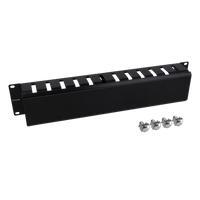
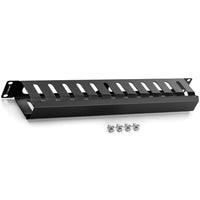
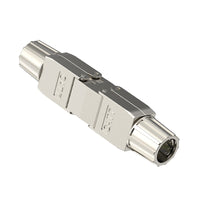
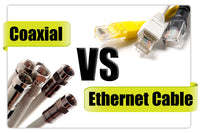
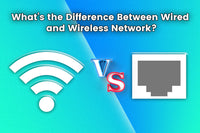
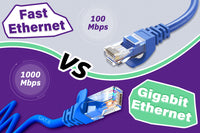
Geben Sie als Erster einen Kommentar ab.
Hinterlasse einen Kommentar